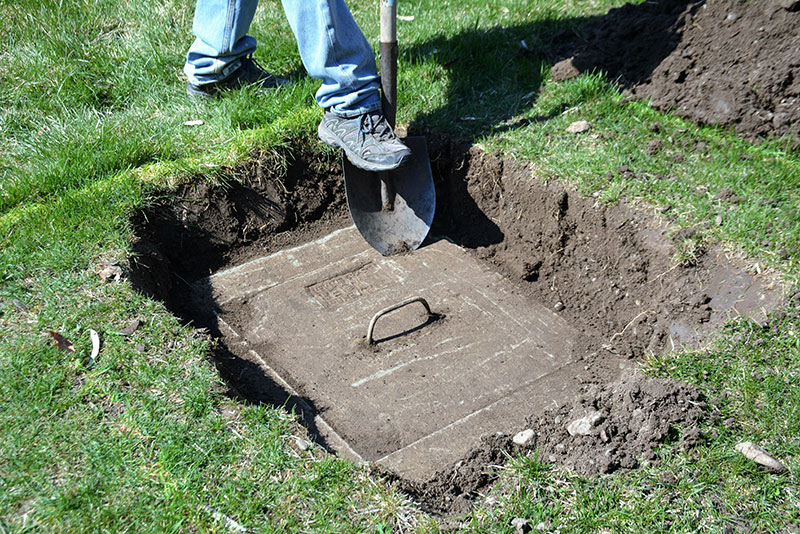Unless you were present when your septic tank was installed, you may have no idea where it’s located. After all, plumbing tends to be out of sight and out of mind until something goes wrong. Even when that happens, odds are good that you won’t be the one handling it. Most people have no cause to consider the placement of their septic tank or go looking for it. It’s just out there somewhere doing a lot of heavy lifting for your home.
However, it makes routine maintenance a lot simpler if you know where your septic tank is located. They need to be pumped every three to five years to avoid any wastewater issues. Even if you just moved into your home, you’ll need to know where the tank is within a couple of years! You might need to know even sooner if you have plans for any projects involving digging. Below are the best ways to locate this vital piece of equipment.
1 – Use a Soil Probe
Soil probes are tools used to locate buried pipes, hoses, and tanks. You push it into the ground before digging to detect any objects. Typically, you can get a simple probe for around $30.
To use the soil probe, head into your basement or crawlspace and see where your sewer lines begin. Remember the location and go out into your yard. Insert the soil probe into the ground until you find where the pipe is. If you follow the sewer line with the probe, it will lead you to your septic tank.
2 – Check Your Property
There are typically a few hints that a septic tank is buried in a certain location. If you spot a dip in the ground or a hill, get out your soil probe. Either of those signs is a good indication that your septic tank is buried there.
Septic tanks will never be installed around certain areas.
- Beneath or next to your well
- Under or against your home
- Under pavement
- Near trees or major landscaping (unless it was done after installation)
3 – Property Records
Septic tank installation typically requires a permit, meaning there will be a paper trail. Permits are typically granted by the health or environmental department in your county. Check your local or county records office to see what’s on file for your property. Some states and counties could even have the records available online. If your home is particularly old, there is a small chance it won’t have records.
4 – Ask Around
If you have neighbors nearby, ask them where their septic tank is installed. Yours may be installed in a similar area. It will give you a place to start.
You can also try contacting local plumbing or septic companies to see if they have performed maintenance at the property previously. They may know the location of the tank.
Conclusion
Knowing where your septic tank is located will make your life easier. It smoothes the maintenance process and allows you to finish projects with less hassle. If you have questions about your plumbing or septic system, contact Walley Plumbing Company today.
Sources:
https://theoriginalplumber.com/plumbing-tips/how-to-find-septic-tank/
https://www.bobvila.com/articles/how-to-find-your-septic-tank/

